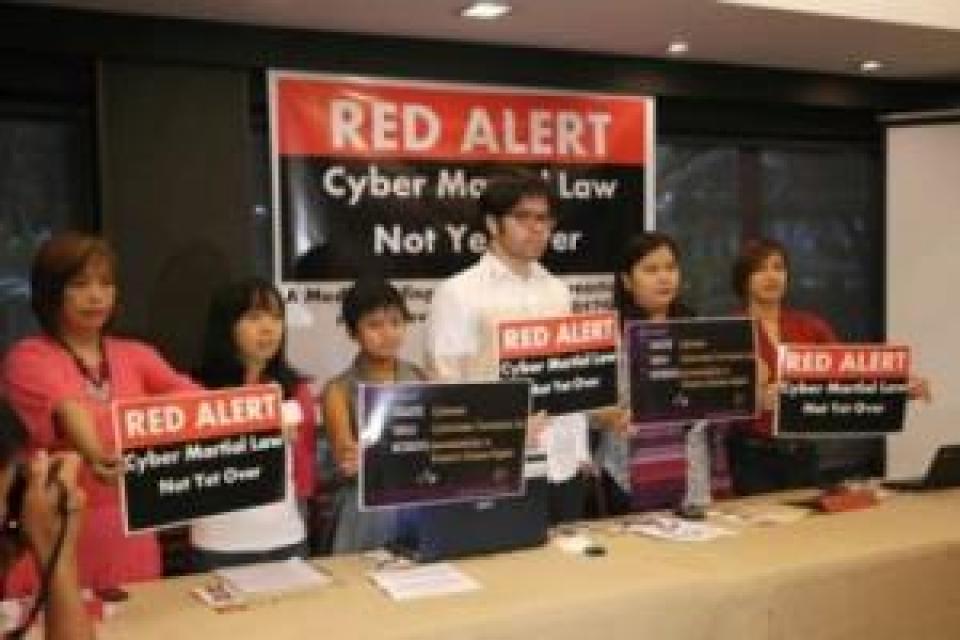
“Women, media, and information/communication technology” is the title of the report that Filipino civil society organisations put together to be shared at the discussions taking place at the 59th session of the Commission on the Status of Women (CSW 59) in New York, from 9 to 20 March 2015.
In its section on online media, the report stresses that information and communications technology (ICT) has been an instrumental enabler for the enjoyment of rights and fundamental freedoms. However, the emergence of ICT comes with the rise of ICT-related violence that stigmatises and targets women. The internet has become a site to perpetrate violence against women in the form of pornography, harassment, threats, invasion of privacy and trafficking.
The Philippines has been dubbed a “cyber sex hub” with women performing sexual acts in front of web cameras and in chat rooms in exchange for dollars. Located in poverty-stricken communities with limited or at times no sources of income at all, women are forced to engage in cyber sex or cyber pornography for their own survival. According to adult website Pornhub, Filipinos rank 26th in the daily global traffic when it comes to watching pornography. Filipinos rank 15th when it comes to watching pornography using mobile devices.
The report points to remaining gaps and challenges in media coverage of women, but also highlights the best media campaign practices of the Women’s Feature Service, an all-women media service working for women’s rights, as well as the best NGO media campaigns. Among these the paper highlights the Association for Progressive Communications (APC) Take Back the Tech! campaign, implemented in the Philippines by the Foundation for Media Alternatives (FMA).
The report also addresses the key priorities for action and recommendations to strengthen gender equality and the empowerment of women, including the proposed recommendations from the Women and Media Workshop at the Asia Pacific CSO Forum on Beijing+20 on 15 November 2014.
Lisa García, a member of the Foundation for Media Alternatives, explains how the organisation’s work experience and research fed into this report: “For women, ICTs have provided vital spheres where they are able to express themselves, assert their rights and identities, initiate and enhance their participation in political and public life. The Report of the Working Group on the issue of discrimination against women in law and in practice to the UN Human Rights Council in April 2013 noted that ‘women who are confined in private homes have used ICTs as a means to break out of their isolation and take part in collective action’ and that ‘women who live under threat of attack because of their sexual orientation have found safety in the anonymity of the internet’ (A/HRC/23/50 para. 48).”
But there is also another side of the coin: “Women and girls accessing the internet in the exercise of their rights likewise face risks and vulnerabilities. Just as violence is used to silence women out of public space offline, the experiences of women and girls online reflect the same pattern. There is evidence that violence against women (VAW) involving the use of technology is growing, and the harms and violations perpetrated through and within ICTs are in need of serious attention.”
And she adds: “In the Philippines, there have been several media reports on how VAW has been perpetrated through the use of technology. In the last few years, there has been a spate of images and sex videos being uploaded on the internet without the woman’s consent, which is a violation of her bodily integrity and privacy. And with the borderlessness and multiple platforms afforded by the internet, the violation is multiplied many times over.”
The FMA has mapped some of these violations. It has also documented three cases whereby technology was used to harm women and children as part of the APC seven-country research that looked into the increasing but largely unreported instances of technology-related VAW and the remedies available to those who experienced them.
The FMA’s findings noted that in the Philippines there are several laws designed to protect the rights of women and children that were passed in the last two decades, but these have not taken into consideration the impact of information and communications technologies.
For example, the Anti-Violence against Women and Children (VAWC) Act of 2004 (RA 9262) provided a comprehensive framework to address violence against women, including mechanisms to increase reporting, documentation and prosecution of such cases. However, this law included no provision on the use of ICT to commit acts of violence against women. The gap in the law was exposed when a female celebrity used it to file charges against a former boyfriend for the emotional harm she suffered because of the private video that was uploaded on the internet without her consent. The female celebrity lost the case under the Anti-VAWC law, but her crusade for redress facilitated the passage of the Anti-Photo and Video Voyeurism Act in 2010 (RA 9995).
This piece of legislation has since become a very important point for recourse in cases of technology-related VAW. The law prohibits acts of taking, copying and reproducing photos and videos, and publishing these through VCD/DVD, the internet, mobile phones and other devices. In 2013, legislators from both the Senate and House of Representatives have also filed separate bills to expand the coverage of RA 9262 to include digital harassment.
In September 2012, the Cybercrime Prevention Act (Republic Act 10175) was passed to address the growing incidence of cyber crime in the country. The law authorises state enforcers to collect traffic data and requires service providers to cooperate and assist in law enforcement by preserving data and disclosing information to aid investigation. Under the Anti-Child Pornography Act of 2009, service providers are also required to notify the police when they obtain information regarding child pornography committed using their server or facility.
“Laws, however, do not always prove to be effective deterrents in the commission of crimes,” states García. “For example, even after the passage of the Anti-Photo and Video Voyeurism Act, there were several cases reported in the media and/or filed with the police. The anonymity that the internet provides emboldens malicious citizens to commit damaging acts without fear of discovery in spite of laws. This means a lot more advocacy and education are needed to address issues of violence and rights abuses through technology.”
“In terms of corporate responsibility, legal frameworks may also have limited impact,” she adds. “In spite of the laws, service providers claim no legal liability for any illegal or criminal activities committed using their services or facilities. They also have no obligation to monitor or pre-screen how their services are used or what materials and content are coursed through their facilities. However, there is also the contention that actions such as monitoring and pre-screening will inadvertently violate the rights to privacy and freedom of expression of innocent users.”
FMA’s findings noted that addressing technology-related violence against women and children requires much more than laws limited to protection, regulation, prevention and criminalisation. It requires addressing the structural inequalities and root causes of VAW. For example, when child pornography is happening in communities ravaged by poverty, economic empowerment programmes need to be developed to offer alternative livelihoods. More broadly, concrete programmes to prevent sexual violence in cyberspace by promoting human rights for all and harnessing ICT’s potential to promote women’s empowerment should also be developed.
García mentions that another challenge that they see “is “how to engage internet intermediaries to build safer online spheres for women and girls’:http://www.genderit.org/resources/internet-intermediaries-and-violence-…. The development of corporate policies, practices and tools that respect women’s rights is a crucial part of responding to and preventing technology-related forms of violence against women. Women’s participation in governance procedures and in telecommunications regulatory policies is also necessary.”
- 5225 views







Add new comment